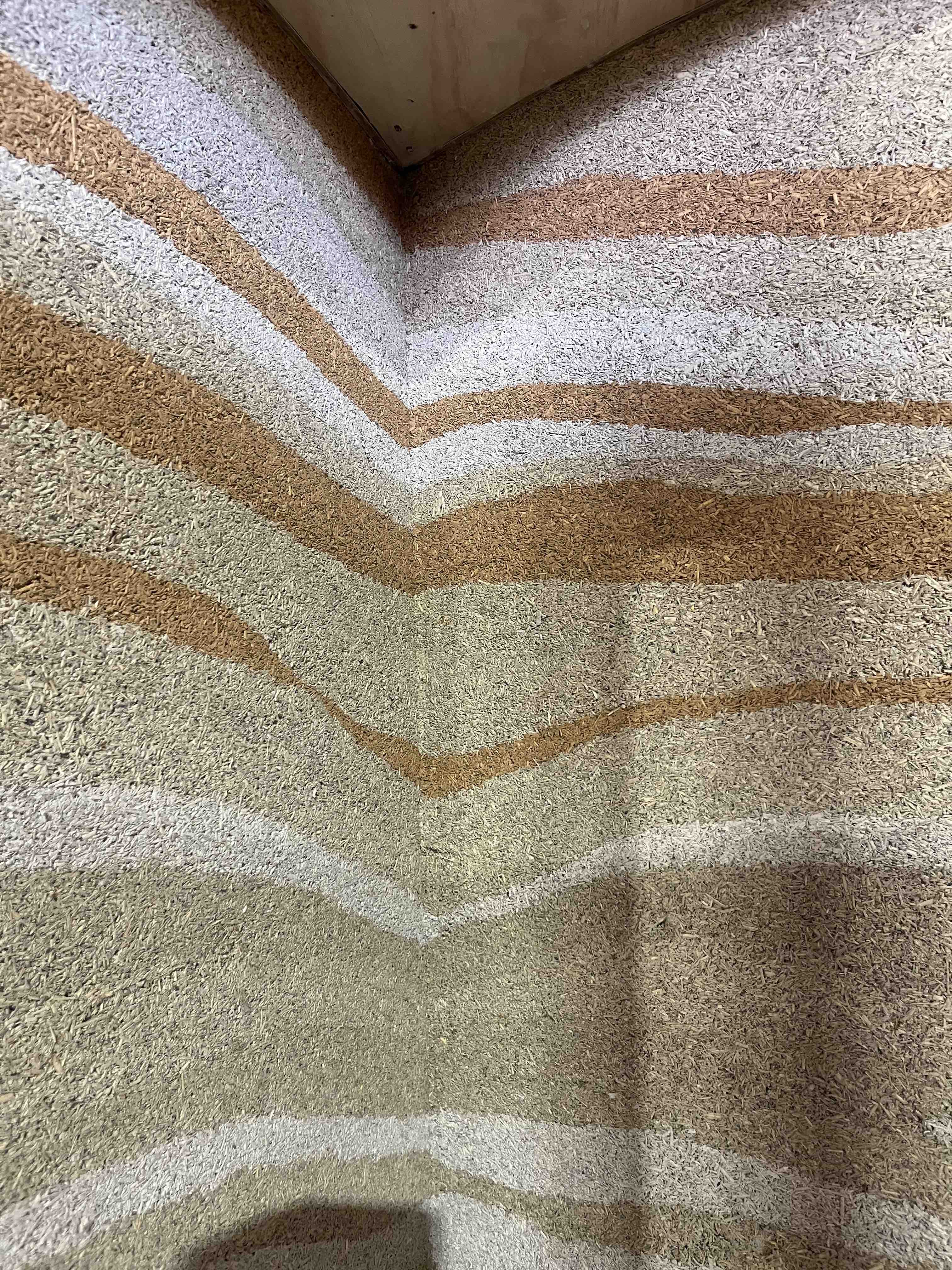The burgeoning industrial hemp industry in Tasmania is set to take a giant leap forward thanks to the University of Tasmania’s efforts to ensure its building projects are at the cutting edge of sustainability.
Hempcrete, a carbon-negative construction material, will be used extensively in the University’s Forestry and Timberyards redevelopment, a $131 million project to create a state-of-the-art hub for learning and teaching in Hobart.
When complete, the Forestry building will be the largest ever commercial use of hempcrete in Australia.
University of Tasmania Chief Sustainability Officer Corey Peterson said it was part of the institution’s commitment to reducing the carbon impact of building and supporting growth, innovation and sustainability in the State’s construction industry.
“Hempcrete is a sustainable building material with incredible insulating, acoustic, and fire-resistant properties and it will be used in the Forestry building instead of carbon intensive materials like plasterboard,” Mr Peterson said.
“The really exciting thing is that we achieved a commercial fire rating for the material through testing commissioned specifically for this project – that unlocks this as a product that can be used in commercial and public buildings throughout Australia.”

Hempcrete has two core components: hemp hurd and binder, in this case lime. The hurd is processed stalks of hemp, a non-psychoactive variant of the cannabis plant. The University’s project is sourcing the hurd from local company X-Hemp, based in Cressy.
X-Hemp is Tasmania’s only hemp processor and the only facility of this type in the world fully owned and operated by women. Founder Andi Lucas, who is also the President of the Tasmanian Hemp Association, said the Forestry project represented a breakthrough moment for the industry.
“Hemp’s potential is enormous as a sustainable material for a range of uses and it will continue to grow into an incredibly valuable industry for Tasmania,” Ms Lucas said.
“We’re a small, growing business without the resources to fund fire testing and certification for commercial applications. It’s projects like the Forestry building, and clients like the University who push for innovation and sustainability, that will unlock hemp’s potential and support the growth of our industry.”
More than 200 cubic metres of hempcrete will be used throughout the study, focus and teaching and learning areas of the project. It is a key element of the approach to the project, delivered by Australian building company Hansen Yuncken, which will see it using more than 40 percent less embodied carbon than standard construction.
Hansen Yuncken project manager Alex Gorton said the company was proud to help pioneer the use of the innovative material at this scale in the University’s Forestry and Timberyards project.
“Not only does this unique building material boast exceptional embodied carbon, acoustic, and fire-resilience properties, but it also champions our commitment to sustainability and supporting local suppliers and businesses,” Mr Gorton said.
“This endeavour underscores our joint dedication with the University to sustainable and community-centred construction in Tasmania.”
The Forestry and Timberyards project started at the beginning of this year. A hempcrete workshop held today (Friday, 11 August) is bringing together the project team to build prototypes of the forms that will be used in the building which is expected to open in 2026.
Pictured in the heading image from left; Corey Peterson, Klara Marosszeky (founder of the Australian Help Masonry Company), Alex Gorton (Project Manager, Hansen Yuncken) and Andi Lucas (founder of X-Hemp and President of the Tasmanian Hemp Association) at the workshop.


